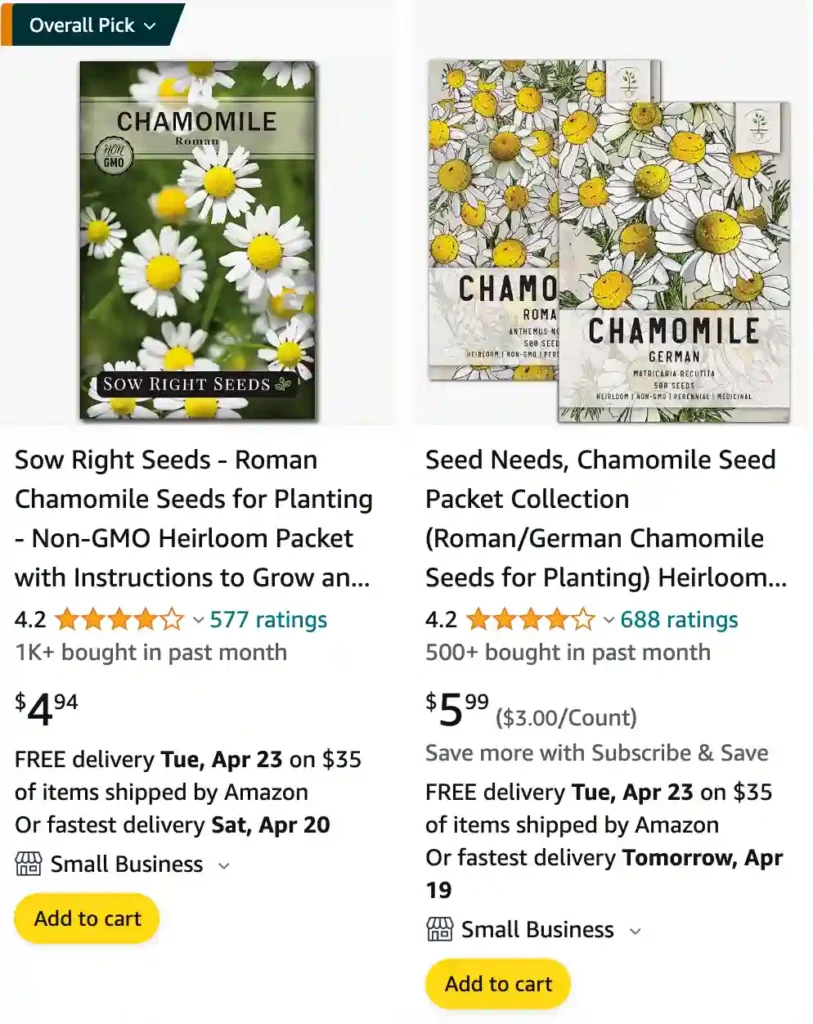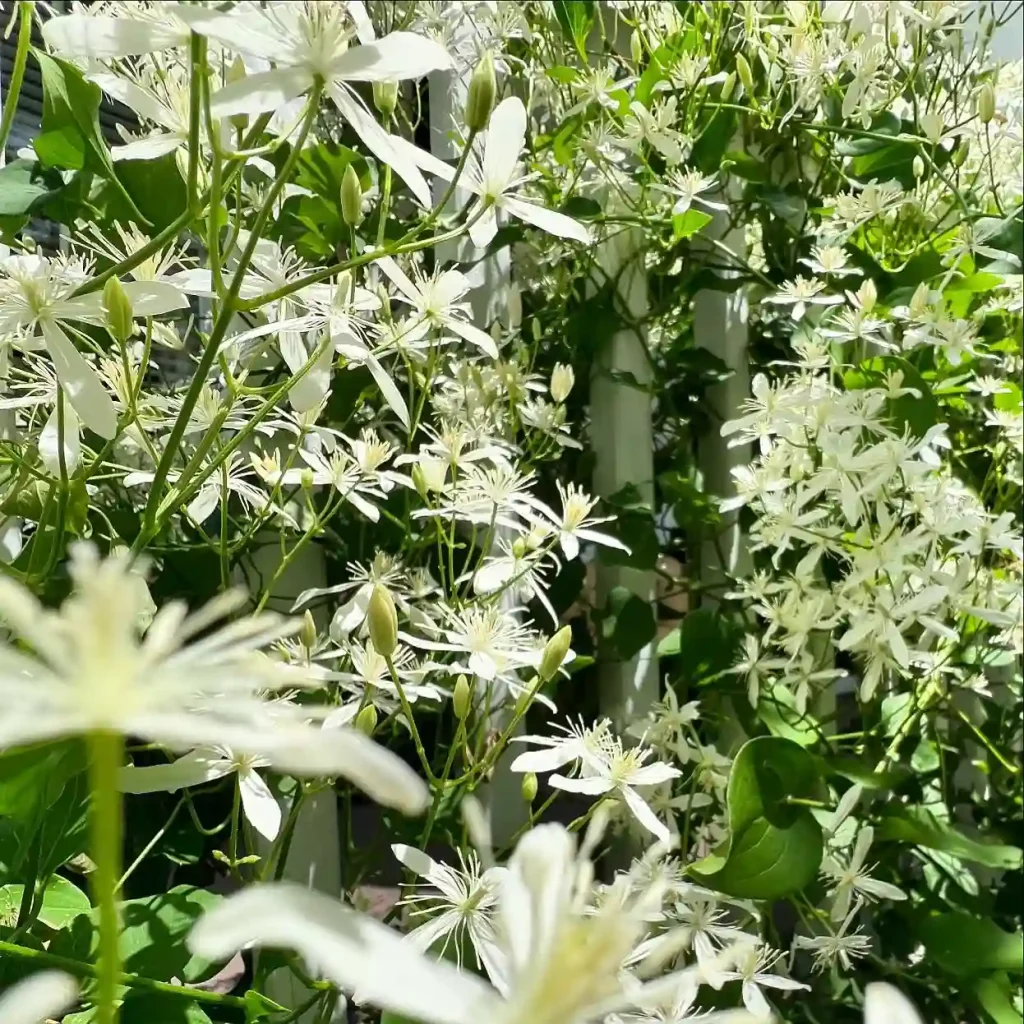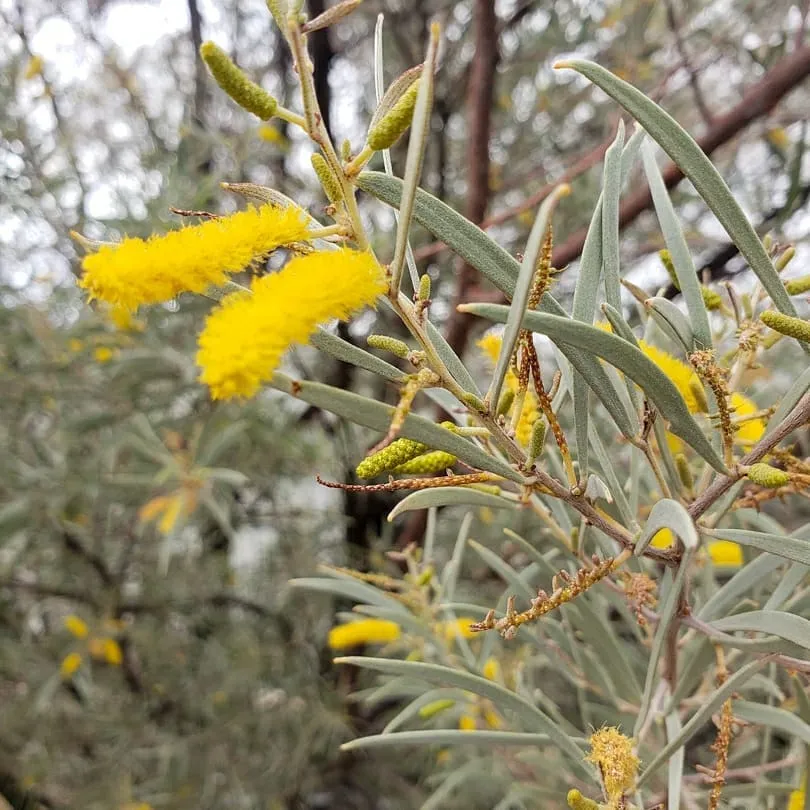
Chamomile with Two Species
Chamomile has always held a special place in my heart. It’s not just the soothing tea or the cheerful daisies that draw me in—it’s the depth of its simplicity and the role it has played in human history. Today, I’ll dive into two prominent species of chamomile: Matricaria chamomilla (commonly called German Chamomile) and Chamaemelum nobile (commonly called Roman Chamomile).
FAQs
What is chamomile tea good for?
Chamomile tea is great for winding down after a long day and helps me relax before bed.
Does chamomile tea have caffeine?
I’ve always loved that chamomile tea is caffeine-free, making it perfect for a late-night drink.
Does chamomile tea make you sleepy?
I find that chamomile tea definitely makes me feel sleepy, which is why I drink it when I need a good night’s rest.
Is chamomile tea safe during pregnancy?
During my pregnancies, I was reassured that chamomile tea was generally considered safe, though I always checked with my doctor first.
What does chamomile tea taste like?
How to harvest chamomile?
Harvesting chamomile involves picking the flowers when they’re in full bloom, and I find it relaxing to do this in the morning.
How to pronounce chamomile?
I pronounce chamomile as “KAM-uh-meel,” though I’ve heard a few variations over the years.
Is chamomile safe for dogs?
I’ve read that chamomile is safe for dogs in small amounts, but I always consult with my vet before giving it to my pets.
Is chamomile safe for cats?
Chamomile is generally considered safe for cats in moderation, but I make sure not to overdo it and consult my vet.
Is chamomile a perennial?
Chamomile can be a perennial in warmer climates, which I’ve found handy for maintaining a consistent supply.
Does chamomile tea lower blood pressure?
From my experience, chamomile tea doesn’t seem to lower my blood pressure, but it does make me feel calm.
What does chamomile smell like?
Chamomile has a gentle, floral aroma that I find quite soothing and calming.
Can you smoke chamomile?
I’ve never tried smoking chamomile, but I imagine the smoke would be quite mild and probably not very enjoyable.
Chamomile vs Daisy
When I compare chamomile to daisies, I find that while both have their charm, chamomile’s soothing qualities and gentle, apple-like fragrance make it my go-to for relaxation, whereas daisies, though lovely, don’t quite have the same calming effect on me.
Chamomile vs Feverfew
My experiences with feverfew show it’s a great alternative for headaches, but it lacks the calming, sleep-promoting properties that chamomile offers, which is why I reach for chamomile when I’m looking to wind down for the night.
Chamomile vs Green Tea
Green tea has its perks with its refreshing taste and caffeine boost, but when it comes to winding down and getting a good night’s sleep, chamomile’s gentle, herbal notes always win me over for a more relaxed evening.
Chamomile vs Chrysanthemum
I’ve enjoyed the floral notes of chrysanthemum tea, but for me, chamomile’s subtle, sweet flavor and its consistent ability to help with sleep and digestion make it my preferred choice for calming and soothing moments.
Chamomile vs Pineapple Weed
Pineapple weed has a unique, fruity aroma that’s intriguing, but I still lean towards chamomile for its classic, comforting flavor and its proven calming effects, which are perfect for those evenings when I need to unwind.
Chamomile vs Fleabane
Fleabane might be interesting, but I prefer chamomile for its established benefits of aiding sleep and digestion—it’s just more reliable and pleasant for my personal taste and needs.
Chamomile vs Ashwagandha
Ashwagandha is great for stress relief, but chamomile’s calming effects and its ability to help me relax before bed make it my top choice when I’m in need of a soothing, gentle herbal remedy.
Chamomile vs Calamine
Calamine is useful for skin irritations, but for soothing a restless mind and helping me wind down, chamomile’s calming properties and gentle flavor are always what I turn to.
Chamomile vs Calendula
Calendula has its benefits, particularly for skin health, but for a relaxing tea that helps me drift off to sleep, chamomile’s soothing qualities make it my preferred choice for calming evening routines.
Chamomile vs Dandelion
While dandelion is excellent for its detoxifying effects, I consistently choose chamomile for its proven ability to help me relax and fall asleep, making it a comforting and reliable option in my tea collection.
The Relevance of Chamomile in Modern Life
Chamomile, as an herb, bridges the gap between ancient tradition and modern wellness. Both species are rich in antioxidants, making them excellent for combating oxidative stress. They’ve been used historically to treat everything from insomnia and digestive woes to skin irritation.
Personally, I love blending chamomile tea with other herbs like lemon balm and mint to create custom, soothing brews. It’s a ritual that connects me to centuries of herbal wisdom.
Growing and Caring for Chamomile
For those interested in cultivating chamomile, the process is straightforward. German Chamomile is ideal for annual herb gardens, while Roman Chamomile can become a perennial favorite. Both thrive in sunny locations with well-drained soil. Regular harvesting of the flowers not only encourages growth but ensures a steady supply for your herbal experiments.
Chamomile also plays well with other plants. It attracts beneficial insects and can act as a companion plant to vegetables, enhancing their growth and health. It’s one of those plants that gives back to its environment, a quality I deeply admire.
Final Thoughts
Chamomile has taught me the beauty of simplicity and resilience. Whether it’s the robust German Chamomile or the enduring Roman Chamomile, each species offers unique gifts. I encourage you to explore both, whether for their medicinal benefits, their charming aesthetics, or simply the joy of nurturing such a timeless plant.
There’s a quiet satisfaction in growing chamomile, in steeping its flowers, and in letting its gentle energy infuse your day. For me, it’s more than a plant—it’s a reminder to slow down, breathe deeply, and savor life’s small joys.
If i die, water my plants!



